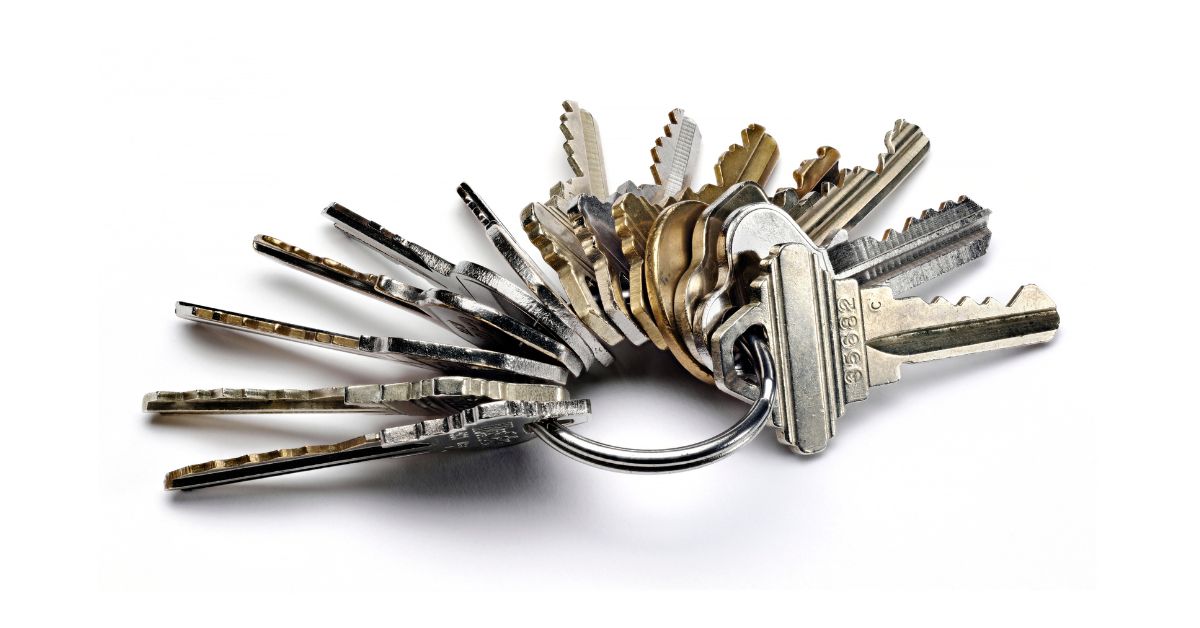Master Key Systems Explained: How Do They Work?

Have you ever wondered how a single key can open multiple doors while keeping unauthorized access at bay? Master key systems represent one of the most elegant solutions in access control, combining convenience with security in a way that may seem almost magical.
Whether you're a property manager overseeing dozens of units, a business owner coordinating access across departments, or simply curious about the mechanics behind these sophisticated lock systems, understanding how master key systems work can revolutionize your approach to security management.
A master key system allows designated keys to open multiple locks within a hierarchy, while individual keys work only on their assigned locks. This creates layers of access control that you can tailor to your business’s needs. The beauty lies in the system's ability to grant broad access to authorized personnel while maintaining strict limitations for others.
The Anatomy of a Master Key System
Understanding master key systems begins with grasping the fundamental components that make them possible. At its core, the system revolves around pin tumbler locks, which contain a group of pins that have to align for the lock to turn.
Pin Tumblers and MACS
Standard locks contain driver pins and key pins that create a shear line when you insert the correct key. Master key systems introduce a third element: Master Acceptance Cuts (MACS). These additional cuts on individual keys create multiple shear lines within the same lock cylinder.
When a person inserts the master key, it aligns with one set of cuts to create the necessary shear line. When a person uses an individual key on the same lock, different cuts align to create a separate, yet equally valid, shear line. This dual-alignment capability enables both keys to operate the same lock successfully.
Key Hierarchies and Levels
Master key systems operate on hierarchical levels, each serving different access requirements:
Individual Keys: These work only on specific locks and represent the most restricted level of access. A tenant's apartment key or an employee's office key falls into this category.
Sub-master Keys: These open multiple locks within a specific area or department. A floor supervisor might have a sub-master key that opens all offices on their floor, but cannot access other floors.
Master Keys: These provide access to all locks within the entire system. Building managers or security personnel typically hold master keys.
Grand Master Keys: In complex systems with multiple master key groups, grand master keys can open locks across all groups. Large corporations or university campuses might employ grand master systems.

How Master Key Systems Function
The mechanical operation of master key systems relies on precise engineering and careful planning. You or a lock installation service must program each lock cylinder in the system to accept multiple key cuts while maintaining security integrity.
Cut Depth Calculations
Locksmiths use mathematical formulas to determine proper cut depths for each key in the system. These calculations ensure that master keys and individual keys create valid shear lines without compromising the lock's security. The Maximum Adjacent Cut Specification (MACS) prevents keys from having cuts that are too similar, which could lead to unauthorized access.
Keying Schedules
A keying schedule serves as the blueprint for the entire system. This document outlines which keys open which locks, establishes the hierarchy of access, and ensures no conflicts exist between different key cuts. Professional locksmiths spend considerable time creating these schedules to prevent security vulnerabilities.
The schedule must account for future expansion, key replacement procedures, and emergency access protocols. Changes to the system later can be complicated and expensive, making thorough initial planning essential.
Types of Master Key Systems
Different applications require different approaches to implementing master keys. Understanding these variations helps determine which system best suits specific security needs.
Standard Master Key Systems
These represent the most common implementation, featuring individual keys and a single master key. Office buildings often employ standard systems, where employees receive keys to their specific offices, while management holds master keys for building-wide access.
Sub-Master Systems
Larger facilities benefit from sub-master arrangements that create intermediate access levels. Hospitals might implement sub-master systems where department heads can access all rooms in their departments, floor supervisors can access their assigned floors, and administrators hold master keys for the entire facility.
Grand Master Systems
The most complex arrangements involve grand master keys that coordinate multiple master key groups. University campuses exemplify grand master system applications, where individual colleges have their own master key systems, but facilities management holds grand master keys for campus-wide access.

Security Considerations and Limitations
While master key systems offer significant convenience, they also introduce potential security vulnerabilities that require careful consideration.
Increased Pick Points
Every additional cut in a master key system creates another potential point of compromise. Skilled lock pickers may exploit these additional shear lines to gain unauthorized access. The more complex the system, the more vulnerable it becomes to sophisticated attack methods.
Key Control Challenges
Managing master keys requires strict protocols. Lost or stolen master keys can compromise entire sections of a facility, necessitating expensive re-keying procedures. Organizations must implement robust key control policies, including regular audits and immediate reporting of missing keys.
Manufacturing Tolerances
The precision required for master key systems makes them more susceptible to manufacturing variations. Slight differences in cut depths or cylinder tolerances can cause keys to malfunction or create unintended access capabilities.
Needs Assessment
Organizations must carefully analyze their access control requirements before designing a master key system. This includes identifying who needs access to which areas, determining appropriate hierarchy levels, and planning for future expansion or modifications.
Professional Installation
Master key systems require specialized knowledge and precision that only experienced locksmiths possess. Attempting DIY installation or using unqualified installers can result in security vulnerabilities, key malfunctions, and expensive corrections.
Maintenance and Monitoring
Regular maintenance ensures system longevity and security integrity. This includes periodic key audits, lock cylinder inspections, and prompt attention to any reported malfunctions. Establishing clear maintenance schedules helps prevent small issues from escalating into major security problems.
Making Master Key Systems Work for You
Master key systems represent proven technology that continues to serve diverse access control needs across numerous applications. Their mechanical simplicity, combined with sophisticated planning and implementation, creates reliable security solutions that can adapt to changing organizational requirements.
The key to successful master key system implementation lies in thorough planning, professional installation, and ongoing management. Organizations that invest in proper design and maintenance enjoy the convenience and security these systems provide while minimizing potential vulnerabilities.
Looking for door locks for sale? Door Hub offers a wide range of locks, cylinders, and other door accessories for your building. Contact us today to discover the best option for your doors.

Author
Greg Richard
Chief Technical Officer and Founding Member of DoorHub.com